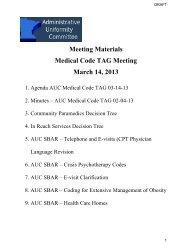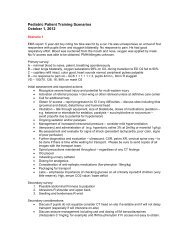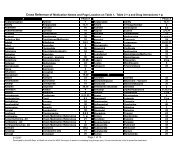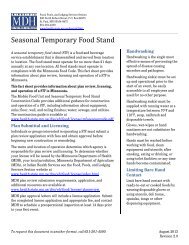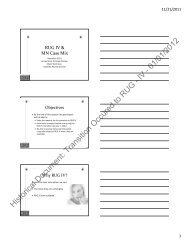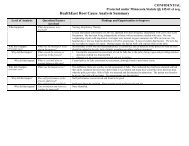Hearing Screening Training Manual - Minnesota Department of Health
Hearing Screening Training Manual - Minnesota Department of Health
Hearing Screening Training Manual - Minnesota Department of Health
You also want an ePaper? Increase the reach of your titles
YUMPU automatically turns print PDFs into web optimized ePapers that Google loves.
PLAY AUDIOMETRY<br />
Ages/Grades: Children who are difficult to screen<br />
Purpose: To obtain valid results with children when a hand-raising response to the<br />
stimulus is not effective<br />
Description: A modification <strong>of</strong> the standard pure tone screening procedure in which the<br />
child is conditioned to respond to the sound by placing a toy in a container<br />
(this replaces the hand-raising technique normally used)<br />
Equipment: Pure tone audiometer, stickers, and interesting, child-safe toys, i.e., animals,<br />
airplanes, cars, beads, clothes pins, pegs and pegboard or nested boxes<br />
Facilities: Appropriate size table and chairs in a quiet, comfortable setting with some<br />
degree <strong>of</strong> privacy<br />
Procedure: Place the headphones on the table facing the child with the audiometer set at<br />
2000 Hz and the maximum level to insure the tone is audible.<br />
Screener holds the toy near their own ear, assumes a “listening” attitude and<br />
presents the tone. Indicate through facial expression that the sound was heard<br />
and then drops the toy in a pail. This may be repeated as <strong>of</strong>ten as necessary<br />
until the child shows interest.<br />
Screener <strong>of</strong>fers the toy to the child and places their hand on the child’s to guide<br />
the first responses. Encourage the child to wait until the sound is heard. When<br />
the child appears ready, present the sound and guide the child’s hand to put the<br />
toy in the container. Child may give consistent responses after only one<br />
demonstration or may need several to respond on their own. Demonstrate first<br />
without and then with the headset on.<br />
Reward the child with praise after the initial responses. If this is not effective, a<br />
tangible reward, like a sticker or food, may be given.<br />
Other<br />
Information: The response interval (tone to response time) varies between children. Some<br />
children will drop the toy as soon as the tone is heard, others will wait until the<br />
sound goes <strong>of</strong>f before dropping the toy.<br />
If the child does not accept the headset, the screener should try putting it on for<br />
only one or two seconds, remove and reward the child. The time with the<br />
headset on should be slowly increased.<br />
A timid child will <strong>of</strong>ten benefit from watching one or two other children<br />
successfully complete the screening.<br />
21




